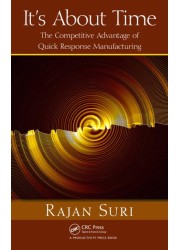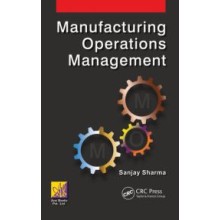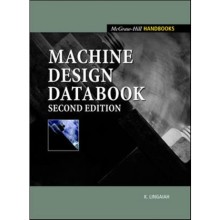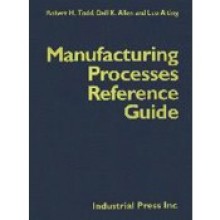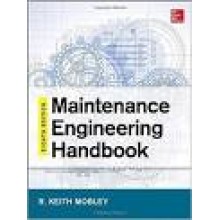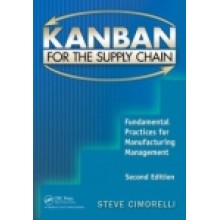It's About Time: The Competitive Advantage of Quick Response Manufacturing
Quantity:
-
Add to Compare
In the decade since the publication of Rajan Suri’s landmark book, Quick Response Manufacturing, the innovative principles of QRM have been proven with impressive results at many companies, big and small, in a variety of industries. While the key principles of QRM remain unchanged, after a decade of teaching QRM workshops to senior executives, Suri has developed a clear, concise, and accessible method of presenting QRM strategy using four core concepts:
1. The Power of Time – the huge impact time has on your entire enterprise
2. Organization Structure – how to structure your organization to reduce lead times
3. System Dynamics – understanding how interactions between jobs and resources impact time to make better decisions on capacity, lot sizes, and similar issues
4. Enterprise-Wide Application – QRM is not just a shop floor strategy, it extends across your whole enterprise including material planning and control, supply management, office operations, and new product introduction
Presenting new case studies on QRM implementation, It's About Time: The Competitive Advantage of Quick Response Manufacturing illustrates how QRM can not only reduce lead times but also improve quality, reduce operating costs, and enable companies to gain substantial market share. This practical reference explains how factories in advanced nations can use QRM strategy to compete with manufacturers in low-wage countries. In addition, it provides helpful pointers for QRM implementation, including accounting strategies, novel cost-justification approaches, and a stepwise process for implementation.
Also included is a bonus CD with five appendices that provide a number of practical details to assist in the success of your QRM implementation. When you are ready to start implementing QRM, you will find that these appendices contain time-saving tips to help you work through implementation issues—including simple calculation methods and tools to support the design of your QRM strategy.
The author, Rajan Suri, recently became one of only 10 people to be inducted into Industry Week's 2010 Manufacturing Hall of Fame.
Table of Contents
The Power of Time
Defining QRM
Challenges to Reducing Lead Time
QRM Focus is Different from Traditional Approach
Manufacturing Critical-Path Time (MCT)
Impact of MCT on Your Organization’s Performance
Rethinking the "On-Time Delivery" Metric
Squeezing Out Time Leads to Numerous Improvements
Organizational Structure for Quick Response: QRM Cells, Teamwork, and Ownership
Response Time Spirals
Four Structural Changes for Quick Response
Harnessing the Power of the Four Structural Keys
Understanding and Exploiting System Dynamics Principles
The Parable of the Landing Gear
The Pitfall of High Utilization
Three-Pronged Strategy to Reduce Flow Time
System Dynamics Compared with MRP, EOQ, and Other Traditional Approaches
Why Companies Mistakenly Invest in Warehouses Instead of Machines
A Unified Strategy for the Whole Enterprise
Principles of Quick Response in Office Operations
Restructure Your Material Planning System to Support QRM
POLCA—the Shop Floor Material Control Strategy to Support QRM
Transforming Your Purchasing Using Time-Based Supply Management
Time-Based Mindset for New Product Introduction
Summary and Next Steps
A Roadmap for QRM Implementation
"Power of Six" Rule for Cost Impact of QRM
Mind-Set First, Technology Later
Embarking on Your QRM Journey
Switch to Time-Based Cost Justification of QRM Projects
Use Accounting Strategies to Support QRM
Recognize that Your Existing Improvement Strategies Strengthen Your QRM Program
Use QRM as a Positive, Unifying Perspective for Your Entire Business
Index
About the Author
Bonus CD:
Appendix A: Tips for Calculating Manufacturing Critical-Path Time (MCT) and Creating MCT Maps
Appendix B: Practical Examples of Focused Target Market Segments (FTMS)
Appendix C: Examples of How to Think Outside the Box When Creating Quick Response Manufacturing (QRM) Cells
Appendix D: Simple System Dynamics Calculations for Quick Insights
Appendix E: Implementing POLCA: The Material Control System for Low-Volume and Custom Products
Write a review
Your Name:Your Review: Note: HTML is not translated!
Rating: Bad Good
Enter the code in the box below:
Copyright © 2014 Engineering Standards Bureau. All Rights Reserved.
Developed By Zoom Into Web


